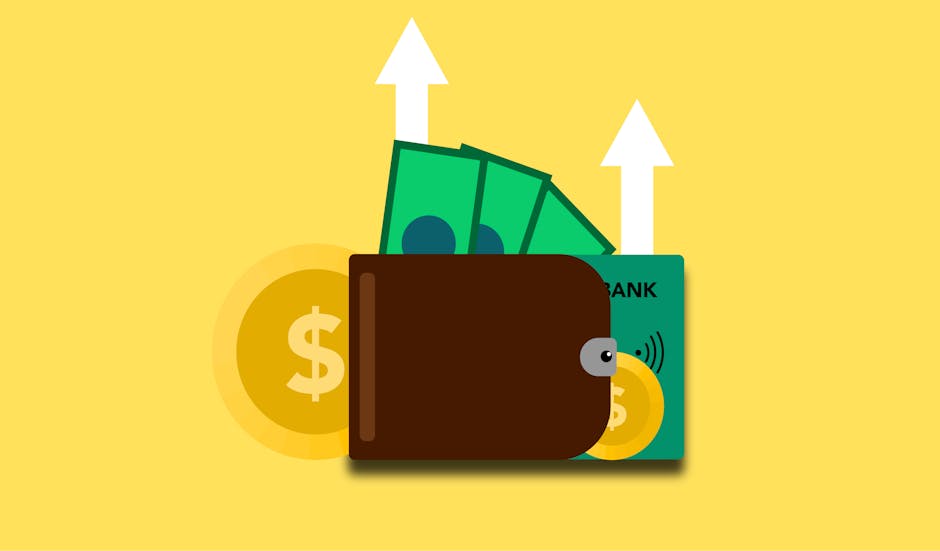An Introduction to IoT: What Your Business Needs to Know
You’re about to embark on the world of IoT, where your business will never be the same. IoT is all about connecting devices, collecting data, and making life easier – think smart homes, wearables, and industrial sensors. It’s not just about gadgets; it’s about streamlining processes, reducing waste, and getting ahead of the competition. But, be warned, IoT also brings new security and integration challenges. Get ready to transform your business, from agriculture to healthcare, and discover how IoT can revolutionise your industry. And, if you’re ready to take the leap, we’ve got the insider scoop on how to make IoT work for you – stay tuned!
Key Takeaways
• IoT refers to the network of physical devices, vehicles, home appliances, and other items that collect and share data over the internet.• IoT devices can be controlled remotely, collecting data on daily activities, sleep patterns, and health metrics, aiming to create a seamless experience.• IoT enables businesses to increase efficiency, reduce costs, and enhance customer experience through automation, real-time monitoring, and data analysis.• To implement IoT, businesses need a device integration strategy, data management plan, edge devices, cloud gateways, and security measures to prevent hacking and data breaches.• IoT security and privacy concerns include unsecured devices, data breaches, malware attacks, unverified firmware, and lack of encryption, requiring careful planning and strategic partnerships.
What Is the Internet of Things?

The Internet of Things, or IoT for short, refers to the network of physical devices, vehicles, home appliances, and other items imbedded with sensors, software, and connectivity, allowing them to connect and exchange data with other devices and systems over the internet.
Think of it like this: your smart home, where your thermostat, lights, and security cameras are all connected and can be controlled remotely through your phone. That’s IoT in action. Or, consider your fitness tracker, which collects data on your daily activities and synches it with your phone. That’s IoT too.
Wearable tech, like smartwatches and fitness trackers, is a prime example of IoT. These devices collect data on your daily activities, sleep patterns, and health metrics, and share it with other devices or the cloud. It’s not just limited to wearables, though. IoT is also present in smart home devices, industrial sensors, and even agricultural equipment.
The idea behind IoT is to make our lives more convenient, efficient, and connected. It’s about creating a seamless experience where devices talk to each other, making our lives easier and more enjoyable.
Benefits of IoT for Business

As businesses scramble to stay ahead of the competition, IoT integration can be the secret sauce that takes their operations from sluggish to supercharged. By harnessing the power of IoT, you can revolutionise the way your business operates, making it more efficient, productive, and profitable.
So, what are the benefits of IoT for your business? Let’s break it down:
| Benefit | Description | Example |
|---|---|---|
| Increased Efficiency | Automation and real-time monitoring reduce waste and optimise resources | Smart factories that adjust production in real-time to meet demand |
| Competitive Advantage | IoT-enabled innovations set you apart from competitors | Retailers using IoT sensors to personalise customer experiences |
| Cost Savings | IoT data analysis identifies areas of inefficiency and reduces costs | Energy-efficient buildings that adjust lighting and temperature automatically |
| Enhanced Customer Experience | IoT-enabled products and services improve customer satisfaction | Wearable devices that track fitness goals and provide personalised coaching |
Key Industries Impacted by IoT

Revolutionising entire sectors, IoT is transforming industries that were previously stuck in the dark ages of manual processes and gut feelings.
You might be wondering, which industries are getting a major facelift? Well, buckle up, because IoT is about to change the game in some of the most unexpected ways.
Let’s start with agriculture. The Agriculture Overhaul is real, folks! IoT-enabled sensors and drones are monitoring soil quality, detecting pests, and optimising crop yields. Farmers can now make data-driven decisions, instead of relying on guesswork. It’s like going from a Ouija board to a precision-guided farming system.
The result? Increased efficiency, reduced waste, and more food on your plate.
And then, there’s the Healthcare Revolution. IoT is helping doctors and hospitals streamline patient care, monitor crucial signs remotely, and even track medication adherence. It’s like having a team of superheroes watching over your health 24/7.
Patients can receive timely interventions, and medical professionals can focus on what matters most – saving lives.
These are just a couple of examples, but IoT’s impact doesn’t stop there. From manufacturing to energy management, IoT is the catalyst for a global transformation.
As you can see, the Internet of Things isn’t just a fancy buzzword – it’s a game-changer. So, are you ready to join the revolution?
IoT Security and Privacy Concerns

Your smart home devices are quietly conspiring against you, and it’s only a matter of time before they spill all your secrets. Okay, maybe that’s a bit dramatic, but the truth is, IoT devices are vulnerable to cyber attacks and data breaches. And, let’s be real, who hasn’t received that creepy feeling that their smart speaker is listening in on their conversations?
The reality is, IoT devices are often built with convenience in mind, not security. This means that hackers can easily exploit vulnerabilities, gaining access to your personal data and sensitive information. The consequences can be devastating, from identity theft to financial loss.
So, what can you do to protect yourself? For starters, take a closer look at the devices you’re bringing into your home or business. Research the manufacturer’s security protocols and confirm that you’re using strong passwords and two-factor authentication.
Here’s a breakdown of common IoT security risks:
| Risk | Description |
|---|---|
| Unsecured Devices | Devices with default or no passwords are an open door for hackers. |
| Data Breaches | Unencrypted data transmission makes it easy for hackers to intercept sensitive info. |
| Malware Attacks | Infected devices can spread malware, compromising entire networks. |
| Unverified Firmware | Outdated or unverified firmware can leave devices vulnerable to attacks. |
Stay vigilant, and remember, your IoT devices are only as secure as the precautions you take.
Implementing IoT in Your Business

You’ve finally made it to the fun part – actually implementing IoT in your business!
Now that you’re convinced of its potential, it’s time to get down to brass tacks and figure out how to integrate those devices and manage all the data they’ll be spitting out.
You’ll need a solid device integration strategy and a data management plan that won’t make your head spin.
Device Integration Strategies
To seamlessly integrate IoT devices into your business, a crucial step is to develop a strategy that tackles the complex task of connecting and managing a multitude of devices, sensors, and gateways. You’re not just dealing with a few fancy gadgets; you’re building a whole ecosystem. Think of it as an IoT orchestra, and you’re the conductor.
You need to harmonise your Edge devices, the ones that interact with the physical world, with your Cloud gateways, the ones that connect to the internet. It’s like marrying the analogue and digital worlds.
Your strategy should cover how you’ll collect, process, and analyse the data from these devices. Don’t forget about security; you don’t want your IoT party crashed by hackers.
Developing a solid device integration strategy is vital to save you from the chaos of managing thousands of devices, each with its own quirks and protocols. Trust us, you don’t want to be stuck in IoT limbo, where your devices are talking to each other, but not to you.
Data Management Plans
Now that you’ve got your devices harmoniously integrated, it’s time to tackle the deluge of data they’re generating – and that’s where a solid data management plan swoops in to save the day, preventing your IoT project from drowning in a sea of ones and zeros.
As you’re about to realise, managing IoT data is no cakewalk. You need a clear plan to collect, process, store, and analyse the data generated by your devices. This is where Data Governance comes in – it’s the framework that confirms your data is accurate, complete, and compliant with regulatory requirements.
Here’s a breakdown of the key considerations for your data management plan:
| Data Management Aspect | Key Considerations || Data Collection | Define data formats, protocols, and frequency of data transmission || Data Storage | Choose between on-premiss, Cloud Storage, or a hybrid approach || Data Analytics | Determine the analytics tools and techniques to extract insights
Overcoming IoT Integration Challenges

When integrating disparate IoT devices, systems, and protocols, it’s like trying to get a group of stubborn cats to march in line – it’s a messy, frustrating, and often futile endeavour. You’re dealing with a plethora of devices, each speaking its own language, and expecting them to work harmoniously together? Good luck with that!
The thing is, IoT integration challenges are real, and they can be overwhelming. You’re not just dealing with technical debt; you’re dealing with system interoperability issues, data incompatibilities, and a whole lot of complexity. It’s like trying to solve a puzzle blindfolded while being attacked by a swarm of bees.
System interoperability is a major challenge, as it involves getting devices from different manufacturers to work together seamlessly.
Technical debt is another issue, which stems from the consequences of quick fixes and shortcuts taken during the development phase.
Data inconsistencies are also a hurdle, as they involve handling data in different formats, resolutions, and frequencies.
Security risks are a major concern, as they involve protecting your devices and data from cyber threats and unauthorised access.
Scalability issues are also a challenge, as they involve ensuring your system can handle the increasing number of devices and data as your business grows.
Don’t worry, it’s not all doom and gloom. With careful planning, strategic partnerships, and a solid understanding of your IoT ecosystem, you can overcome these challenges and reap the benefits of IoT integration.
The Future of IoT and Beyond

As you’ve somehow managed to tame the beast of IoT integration, you’re probably wondering what’s next – and luckily, the future of IoT is looking brighter than a supernova on a clear nite.
With the groundwork laid, it’s time to explore the uncharted territories of IoT. The possibilities are endless, and we’re not just talking about smart home devices and wearables.
Imagine a future where cities are transformed into Smart Cities, where IoT sensors and devices work in harmony to optimise traffic flow, energy consumption, and waste management. It’s not just a pipedream; cities like Singapore and Barcelona are already embracing this vision.
IoT is set to revolutionise urban planning, making our cities more liveable, sustainable, and efficient.
But that’s not all. The integration of IoT with Quantum Computing is poised to tap unprecedented possibilities. Imagine processing vast amounts of IoT data in real-time, enabling predictive analytics and insights that were previously unimaginable.
The fusion of IoT and Quantum Computing will propel industries like healthcare, finance, and logistics into a new era of innovation.
As you gaze into the crystal ball, you’ll see a future where IoT is woven into the fabric of our daily lives. It’s an exciting time, and you’re at the forefront of this revolution.
Buckle up, because the future of IoT is about to get a whole lot brighter!
Conclusion
You’ve made it to the end of our IoT crash course!
Now that you’re equipped with the basics, it’s time to put your newfound knowledge into action.
Take, for example, the city of Barcelona, which has implemented smart traffic management systems, reducing congestion by 21%.
Imagine what you could achieve with IoT in your own business – increased efficiency, improved customer experience, and a competitive edge.
So, what’re you waiting for? Get connected and start innovating!
Contact us to discuss our services now!
